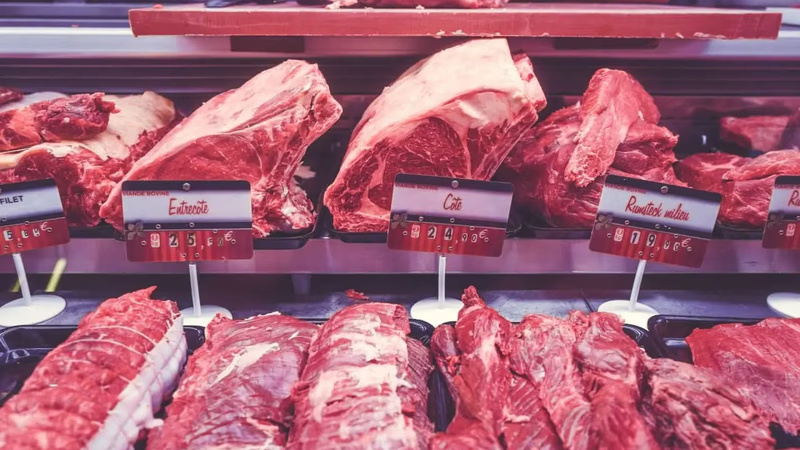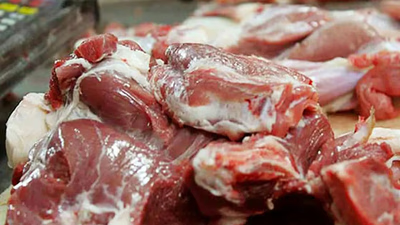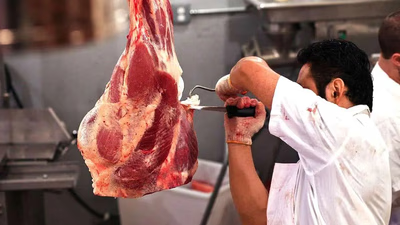
Meat pricing trends in Middle East trade platforms.
Pricing of meat as a single agricultural product is widely practiced around the world. International meat trade includes the export and import of this product between countries. Meat producing countries can export it to other countries. Some countries have gained fame as meat exporters due to their rich natural resources and high production capacity. Meat export can serve as a source of income for countries and have a high economic value. Also, with the increasing demand for meat in the world markets and the existence of trade agreements between countries, meat export is considered as an important element of international trade.
Countries that need more meat supply may import it from other countries. Importing meat is used as a way to meet the domestic demand for meat. Some countries, due to resource limitations, lower production capacity, or high demand, make meat imports an essential place in their international trade. Trade agreements and contracts between countries can have a large impact on international meat trade. These agreements may reduce trade restrictions, set import tariffs and restrictions, or open export markets. Some trade agreements related to meat include trade agreements between regions, such as the European Union, and bilateral agreements between countries.
Meat, as one of the main products of agriculture and livestock industry, plays an important role in international trade. Supply and demand have a great influence on the price of meat. If the demand for meat is high and the supply is less than the demand, the price usually increases. Also, if supply exceeds demand and demand is low, the price may fall. The costs associated with meat production, such as the cost of animal feed, the cost of maintenance and breeding, the cost of labor and other costs, have an effect on the pricing of meat. An increase in the cost of production usually leads to an increase in the price of meat.
Restrictions such as legal and regulatory restrictions, infrastructural problems, military and security problems have a direct impact on the price of meat. These restrictions can increase costs and, as a result, increase prices. In competitive markets, competition between meat producers can lead to lower prices. Competition causes manufacturers to try to lower prices to compete with competitors.
Changes in the global market, such as changes in exchange rates, international trade and economic policies, can also have an impact on meat prices. For example, changes in the exchange rate can affect the export and import prices of meat. The type and quality of meat is also influential in pricing. Higher quality meats and specialty meat products usually command higher prices.
The producer calculates the costs associated with meat production, including the cost of buying and feeding the animals, the cost of maintenance and breeding, the cost of labor and administrative costs, and adds the expected profit to it. Then the final price of meat is determined based on these costs and the expected profit. The price of meat is determined based on market prices and current supply and demand. Manufacturers and suppliers may adjust prices based on competitors' prices and market conditions to be competitive and attract demand.
Some meats are defined based on quality and specific characteristics. In this case, the price of meat is determined based on quality, quality, animal diet and other related factors. Higher quality meats have higher prices. In some cases, the price of meat is determined based on the type of meat. Different cuts of meat, such as red meat, chicken, veal, etc., may have different prices.
Standards and regulations related to meat quality, health and safety play an important role in international meat trade. Some countries set strict standards and regulations for the export and import of meat to ensure that the meat traded is healthy and safe. International meat trade is important as a fundamental part of the agricultural and livestock industry worldwide and is affected by various factors such as production, demand, contracts, agreements and regulations.
-

Meat pricing is a critical aspect of international trade, influenced by supply and demand dynamics, production costs, and trade agreements. Countries with rich natural resources often emerge as prominent meat exporters, while others rely on imports to meet domestic demand. The balance between supply and demand significantly affects meat prices; high demand with low supply typically drives prices up, whereas excess supply can lead to price reductions. Production costs, including animal feed and labor, also play a vital role in determining meat prices. Legal restrictions and infrastructural challenges can further impact pricing by increasing costs. Competitive markets may see lower prices as producers strive to attract consumers. Additionally, global market changes such as exchange rate fluctuations and economic policies can influence import and export prices. The quality of meat is another determinant; higher quality meats command premium prices due to their specific characteristics.
Regulatory standards for health and safety are crucial in maintaining the integrity of international meat trade. Overall, the interplay of these factors shapes the landscape of meat pricing in world markets.
-

The meat market in West Asia is significantly influenced by domestic demand, population growth, and lifestyle changes. Trade policies, including tariffs and agreements, play a crucial role in shaping the import and export landscape. Key factors affecting meat production include natural resources, infrastructure, technology, and health standards. Competition within domestic and international markets enhances quality while reducing prices. Major players in the Asian meat market include China, India, Japan, South Korea, Vietnam, and Indonesia. Each country exhibits unique consumption patterns influenced by cultural preferences and economic conditions. For instance, while China leads in overall demand for various meats, India has restrictions on beef due to religious beliefs. Japan prioritizes high health standards for its meat products.
The rapid economic growth across these nations indicates a robust potential for the meat supply chain. However, challenges such as political instability and infrastructure issues can impede trade development. Innovations in production and processing technologies are essential for enhancing market competitiveness.
-

Meat consumption in the Middle East and West Asia is influenced by cultural, religious, and economic factors. Red meat, particularly from sheep, cows, and goats, is a staple in many traditional dishes such as kebabs and Qorme Sabzi. Chicken is also widely consumed, with various preparations like tandoori chicken being popular. The Islamic dietary laws prohibit pork consumption, which is rooted in both religious beliefs and historical practices. Halal slaughtering methods are essential for meat to be deemed acceptable for Muslim consumers. Fish and seafood are prevalent along the Persian Gulf and Gulf of Oman coasts. The growing trend towards vegetarianism may alter future meat consumption patterns. Trust in imported meats varies among consumers; many prefer locally sourced products due to concerns about halal compliance and quality standards. This highlights the importance of transparency regarding the origin and preparation methods of imported meats.
-

The Middle East, with its rich history in animal husbandry, is a significant player in global meat production. The region"s diverse climates support various livestock farming practices, leading to high domestic meat consumption. Key meats produced include beef, goat, chicken, and sheep, with countries like Iran, Iraq, Turkey, and Saudi Arabia being prominent producers. Goat meat is particularly valued in local cuisines, while chicken serves as a vital protein source. Additionally, fish farming thrives along the Persian Gulf and Arabian Sea coasts. However, the region faces challenges such as water scarcity impacting production capabilities and reliance on imports to meet demand. Cultural factors also influence meat production; for instance, pork is largely prohibited in Muslim-majority countries but is produced in non-Muslim regions like Armenia and Georgia. Understanding these dynamics is crucial for stakeholders in the B2B marketplace and supply chain solutions across Asia. "




